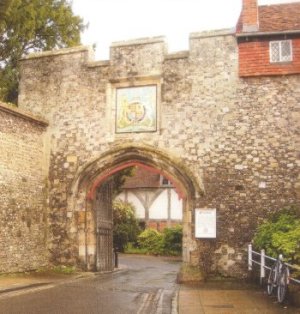Winchester and its Setting
An impression

High Street/Butter Cross

Priory Gate

Cathedral Close

Kings Gate
“Of all the cities in England, Winchester has managed to sit particularly comfortably in its landscape. The settlement shelters in a valley bowl where the waters of the River Itchen collect. The web of streams and channels and their inherent defences helped Alfred the Great to choose the town as his capital, but the Norman shift to London allowed Winchester to sleep on as a provincial city.
Today you can still walk from the Iron Age fort in the open downland across the medieval water meadows, through the King’s Gate in the city walls and the Priory Gate to the Cathedral Close and reach the Buttercross in the centre of the city without passing a petrol station, a Tesco or a B&Q. What is more, when you look back from the Buttercross, you can still see the open hillsides that surround the city and when you approach from a distance the towers of the Cathedral, the Guildhall, the Prison and the College chapel stand out as the principal buildings. Tess of the d’Urberville’s hanging tower is the first glimpse of the city from miles away. Town and countryside remain united.”

Water meadows

St Catherine's Hill
